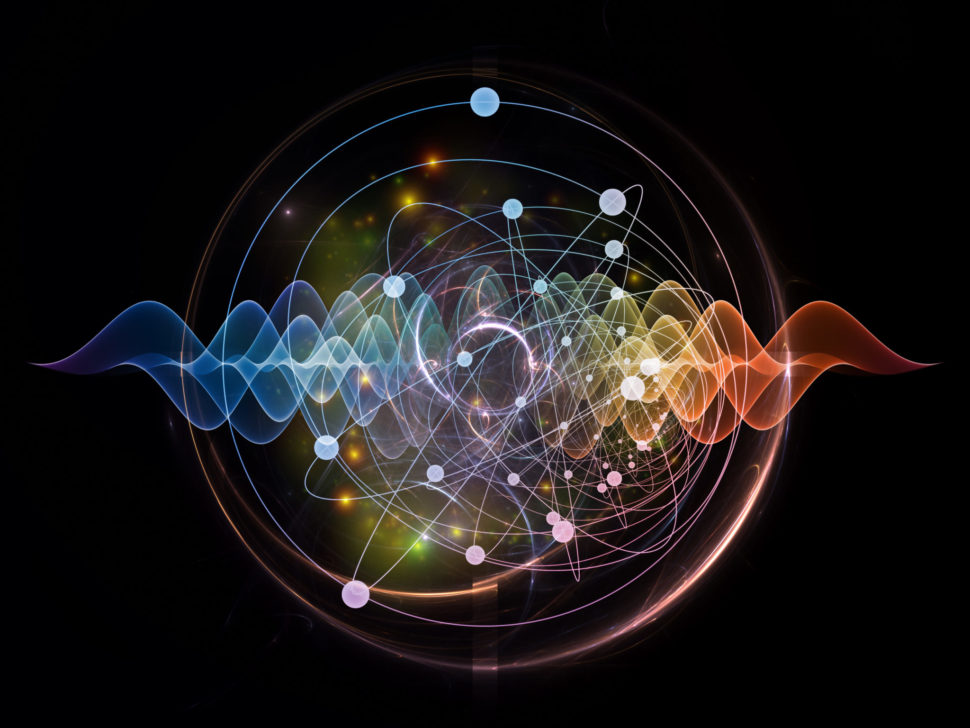A new study shows how, thanks to the “superposition principle” in quantum theory, information can travel in both directions at the same time using only one particle.
At 186,282 miles per second, light is pretty fast. Actually, if we refer to Einstein’s Relativity, nothing can travel faster than light in the universe.
How fast could light need to be? It may seem like it should be fast enough for anything. However, when it comes to communication, especially when we consider it from an astronomical point of view, it may not be fast enough.
If Relativity puts a limit on speed, quantum mechanics not only allows for a solution to the communication time delay issue, it may also enable simultaneous two-way communication.
Light is not Fast Enough: FTL Quantum Communication
It seems increasingly likely that, one day, we may set foot on Martian soil and establish a permanent presence there. When that dream comes true, communication with Earth would be one crucial component of the endeavor.
The speed of radio signals is that of light. At such speed, it would take an average of 13 minutes for a signal to travel from Earth to Mars or vice versa.
That’s only Mars, which in astronomical terms, is in a spitting distance from Earth.
On a larger scale, signals to the nearest star to Earth, Proxima Centauri, would take about 4.24 years to get there.
This may seem to throw a logistical spanner in the works of future space colonization or travel outside of our solar system. However, we may find a solution within the framework of quantum mechanics and a new quantum theory.
If the big world, the one we can observe by our naked eyes, fascinates us, the world of the small is also replete with no less puzzling phenomena. What seems like every aspect of the sub-atomic world challenges the intuitive understanding we’ve come to form about the world we live in.
In the infinitely small world, where classical physics has much less hold, quantum laws prevail.
In the quest toward harnessing the power of quantum technology, scientists are still peeling off the layers of mystery that surround it through quantum theory.
In the quantum realm, particles are subject to some quirky phenomena that defy common sense.
One of these phenomena is quantum entanglement, which binds two particles together so their quantum states are interrelated, regardless of the distance between them.
Using quantum entanglement to teleport information was shown to be possible back in 1997, thanks to the experimental work of a research group at the University of Vienna.
Last year, Chinese scientists have been able to establish an entanglement of photons over more than 1,200 km, opening promising perspectives for practical quantum communication.
Because the distance between particles doesn’t seem to matter when they’re entangled, some think that faster than light communication becomes potentially within reach.
Quantum Superposition and Two-way Street Communication

Two physicists, Flavio Del Santo from the University of Vienna, and Borivoje Dakić from the Austrian Academy of Sciences, have shown how “quantum superposition” could be leveraged for simultaneous two-way signaling.
The common understanding is that communication can go only in one direction at a time, from sender to receiver or vice versa.
For there to be an exchange, an information carrier (particle, signal) has to go from sender to receiver, then back, and so on.
That is true if we bend to the classical physics rules that forbid two-way communication via the exchange of the same information carrier.
However, in the world of quantum theory, it seems like anything is possible. Enter quantum equations to the scene and common sense flies out of the window.
Entanglement is only one of the bizarre concepts of quantum physics that govern the behavior of matter at the microscopic scale.
Another fundamental quantum principle is “superposition”, according to which a particle can take two distinct states of energy simultaneously.
For example, the power of quantum computers is based on “Qubits” that are in fact atoms locked in a superposition state (allowing them to take two different states at a time unlike classical bits).
Quantum superposition is the key idea behind the experiment of Del Santo and Dakić.
In their study, the team put a particle in a superposition state so that it was at two different locations at the same time. Encoded with a message at both ends, the particle could carry information in both ways simultaneously.
Dakić explains with an example:
“Consider the simplest scenario, where two players, Alice and Bob, want to exchange a simple bit of information, i.e., either 0 or 1. They encode their respective bits (messages) at the same time, directly into the superposition state of a quantum particle. Once the information is encoded, the partners send their ‘parts of quantum particle’ towards each other.”
This could lead to an entirely new platform for not only extraterrestrial communications but also that of our day-to-day lives.
As with most aspects of quantum theory and mechanics, the research is not ready for real-world implementation. However, it provides us with another avenue to provide FTL communication and, maybe one day, FTL travel.
Researchers have published their study in Physical Review Letters.



















This is great news and something I believed for years that we could achieve. In the past few years I’ve read articles by ‘scientists’ who swore up and down that quantum communication was impossible and they used all kinds of fancy charts and explanations. I always thought they were full of crap but it bothered me that few if any came out in support of the idea until very recently.
This article confirms what I knew all along and it’s good to hear it from more credible sources. Bottom line here is that now FTL communication will be possible. This is very exciting and I agree with the article hopefully down the road we’ll get FTL travel too.
I’ve read that Quantum physics ignores classical physics, so essentially what may seem ‘impossible’ today could be commonplace in the future. I think 100 years from now we could have warp drive (or sooner) and travel the galaxy. Who knows perhaps we’ll build Stargates like the TV series.
For now though, I’d love to see physicists build FTL quantum radios to prove the idea works. It shouldn’t be difficult, once you can transmit 1s and 0s with qubits then you can use current technology.
If that were possible, shouldn’t quanta and superpositions already exist in the nature; both in organic and inorganic creatures? Perhaps some plants or animals already communicate that way? Until now the only text I have seen this been handled is Anton Zeilinger’s book Dance of the Photons. He ponders the question about possible superpositions in DNA and how that would make cloning impossible.
As for applications, perhaps we are already communicating with other civilizations
in the universe. They may wonder why we don’t respond.
Quantum communication might be also our first possibility to operate in time. Militaries would benefit already with two or three minutes advance warnings during missile attacks. Paradoxically, if that proved to be possible, for sure it would be kept impossible.
Yet another astonishing technology discovered from the quantum realm. Incredible.
Random question. The picture used for this post, is that a copywrited image? I love it and want to use it for an ebook I am writing about quantum.
Thanks
Hey Sam. We’re really glad you’re as jazzed about quantum theoretical and practical applications as we are.
As far as the image goes, it is copyrighted. It’s from Shutterstock.com from the artist Agsandrew.
Gonna lose it if this actually works and is widely accessible. There will be so many little hobby projects I’ll start up.